Soundcore Q30
A good entry level ANC headphone can be made better with measurements
This was my initial Soundcore headphone, it was (and still is) a very cheap fully featured ANC bluetooth headphone (currently around $60 probably and often even cheaper when on sale). Though by the latest standards it is a bit outdated and missing some features and codecs that have become standard even at this low price point.
Having used the Q30 as my travel ANC headphone for a few years now. I recently bought a 711 clone coupler and a KB501X soft pinna, so I decided to systematically measure the headphone at all possible EQ levels then tune the headphone close to the harman target for a bit of nerdy audiophile fun and end up with surprisely good results.
Note: This review does not cover all the features of the Q30 as in this specific review I am focusing on the EQ feature
Introduction
For those who seek the sweet spot between price and performance in their audio gear, the Soundcore Q30 headphones present a compelling case if you can spend a few minutes setting the EQ to the right values. Let me guide you through the process in this short review.
Build Quality and Unboxing
The Soundcore Q30 headphones greet users with an unboxing experience that belies their budget-friendly price tag.
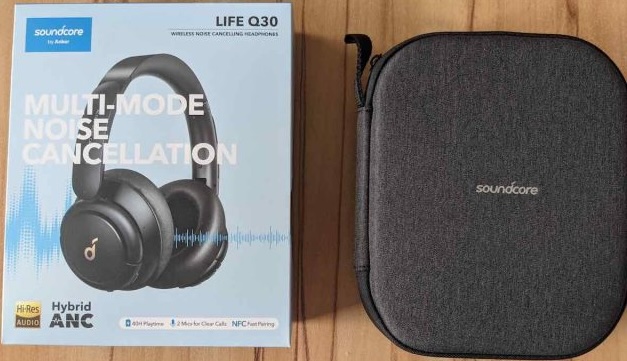
Encased in a neatly designed package, the headphones come with a thoughtful assortment of accessories, including
a carrying case, USB-C charging cable, and a 3.5mm audio cable for wired listening.
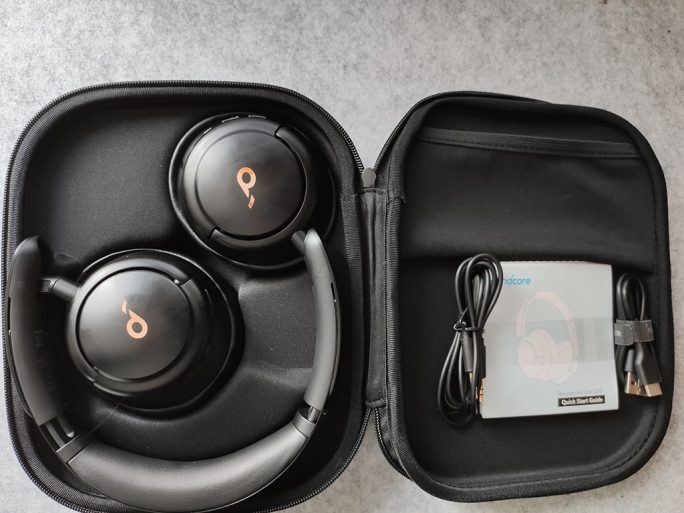
The build quality of the Q30 is commendable; with plush ear cups and a sturdy headband that promises comfort over long listening sessions. The materials, while not premium in the sense of high-end audiophile headphones, strike a balance between durability and lightweight comfort. The intuitive control layout and the tactile feel of the buttons further enhance the user experience, making it clear that Soundcore has not cut corners in designing a product that feels robust and reliable.
The Q30 does look a little date and shows its age a little compared to the newest Soundcore headphone the Space one:
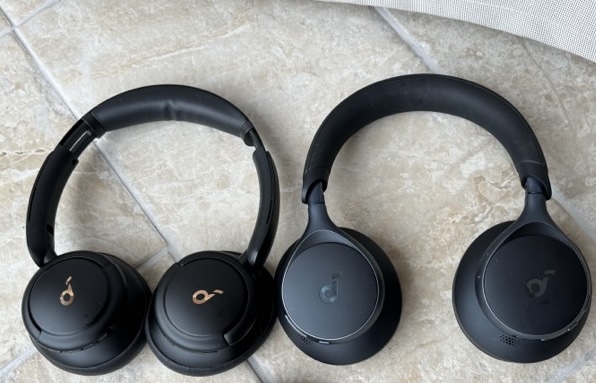
Sound Quality
The default sound profile of the Soundcore Q30 is far too bass heavy for my liking but with the EQ settings that I will recommend in the measurement section below it becomes a joy to listen especally with Active Noise Cancellation (ANC) enabled (when travelling on a business trip or even working in a noisy environment).
In my opinion, the excelent ANC technology for the price further enhances the listening experience beyond a closed back headphone or even a IEM, effectively reducing ambient noise and allowing the finer details of the music to shine through, when combined with a reasonable well tuned headphone this gives an excellent audio experience in noisy environments.
Measurements
I used the AAC codec for these measurements (with a Macbook Pro running REW).
As I mentioned for me the key feature, beyond the Active Noice Cancellation, is the EQ built into the ‘companion’ Soundcore Application. There are lots of the usual ‘preset’ categories within the EQ feature of the App but crucially there is a ‘custom’ section. This is the custom section I will be mainly measuring with all 3 headphones presented in this post as once you have tweaked your EQ in that section it is saved into the headphone no matter how many future devices you use with the headphone, as someone who often has to swap between IOS and Android and between a Macbook and a PC laptop for work, having headphone with ANC in a noisy office environment with ‘good’ tonality is ideal.
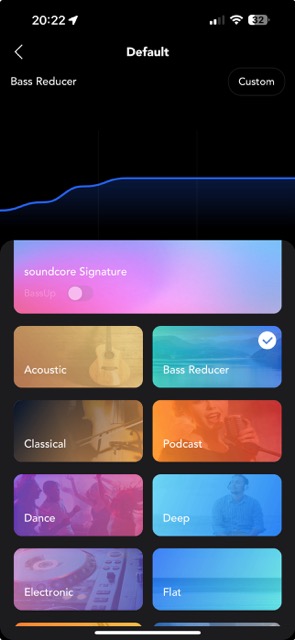
Frequency Response
*Note: The Q30 was pretty difficult to get a consistent seating, it took a few attempts to get it “correct” otherwise I was getting a screwed measurement of too much or too little sub-bass or exaggerate treble, but once I got a good seating I tried to replicate across all measurements.
Note: All measurements were also taken with the ANC enabled. I did notice that Transparency has a huge discrepancy on the Frequency Response, but I don’t anyone would care about the Frequency response with Transparency enabled *
Firstly, just to show how boosted the bass is with the ‘default’ soundcore profile and even their ‘flat’ sound profile is way too bass heavy. Here for the Q30 compared to what I ended up with after playing around with the EQ to get closer to the Harman OE target, though the sub-bass cannot be tweaked so the sub 100hz was always higher than I would have liked:
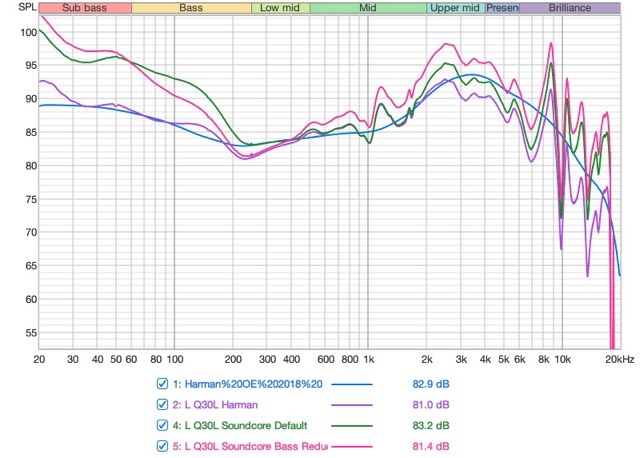
I did measure the various presets - the ‘podcast’ preset was the nearest to my eventual EQ. Might be a quick option
especially if you are going to use ’external’ EQ to further ‘fix’ the Q30 sound profile, i.e. just select ‘podcast’
then EQ within your own App:
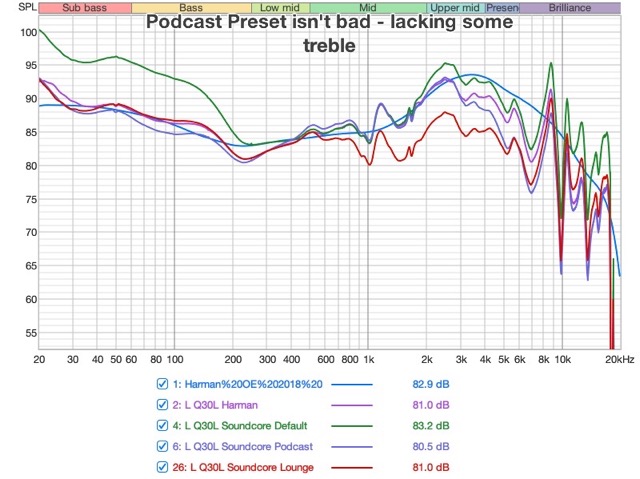
The left and right channels show lots of channel in-balance especially in the treble - this was with my EQ applied:
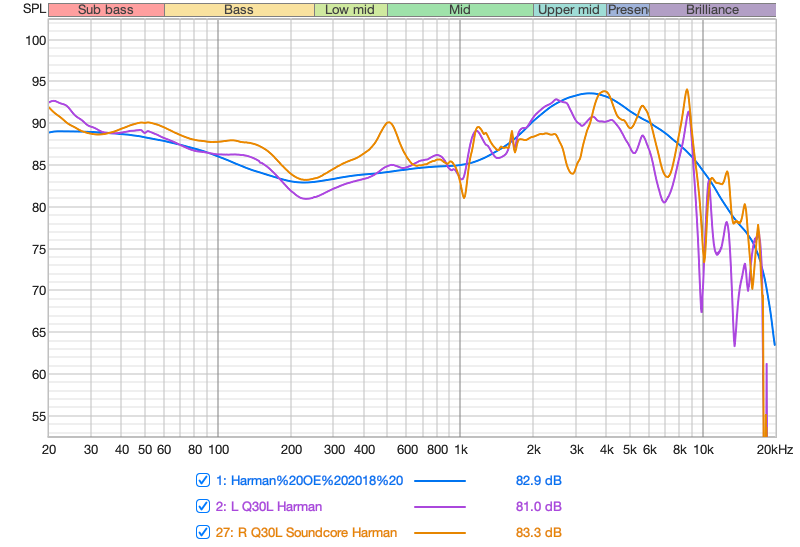
I also measured a second Q30 (as my wife wanted one) for comparison and channels were somewhat consistent (this was with the ‘flat’ soundcore profile - which is the same as their default as my wife’s Q30 was just using the defaults):
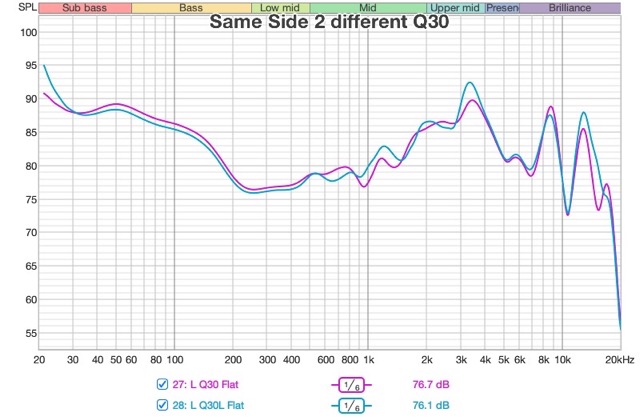
Now, to determine was possible with EQ, I measured all the extremes of all the EQ filters so here are the various measurements the min and max levels ( +/- 6 db according their app) on all 10 bands, the sub-bass does not change with the 100hz filter so ’taming’ the bass is difficult:
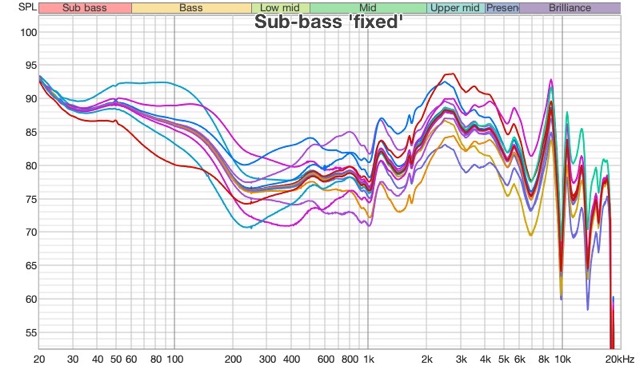
Here is the normalised view of range of dB possible with each of the max and min levels for the Q30. This is shows that you do get about the +/- 6dB range promised within the App, though a few places it is only about +/- 4dB. You can also see the Harman target in the background and why the lower bass is always a problem:
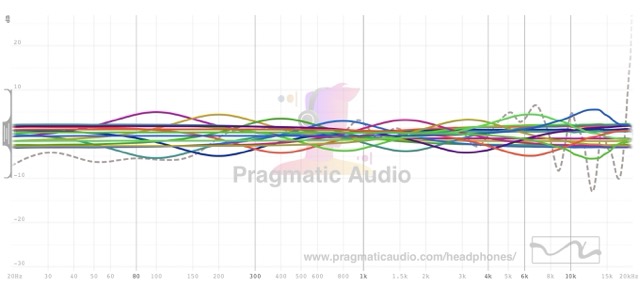
Overall this is, as you will see later in this post, far better for tweaking the sound than newer Soundcore ‘Space One’:
Note: As well as attaching the REW measurements, I have uploaded all measurements to my (headphone database)[www. pragmaticaudio.com/headphones] for anyone to look at and generate their own EQ.
Here is what my recommended ‘custom’ harman EQ profile looks like within the Soundcore App, though as I said early the ‘podcast’ preset would make a good quick EQ to then use as a basis for further EQ:
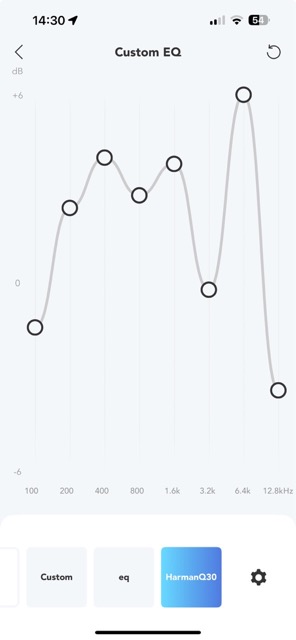
This ends up with this reasonable Frequency Response:
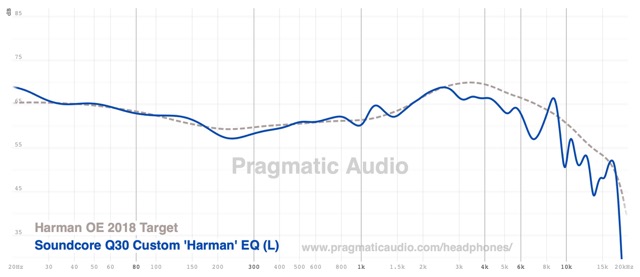
And finally here is the distortion:
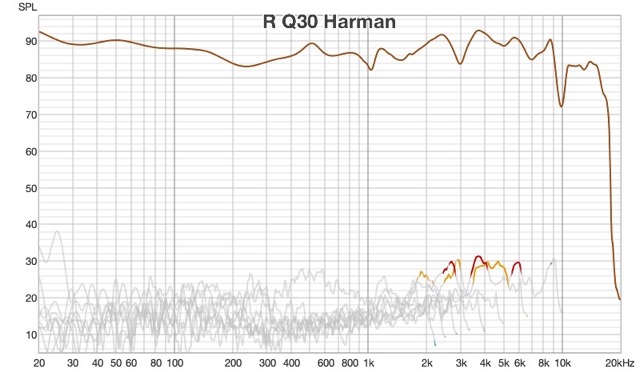
My Ratings
Overall I gave the Q30 a pragmatic rating of 4 stars, the price is good, and while the default sound profile is a typical bass heavy consumer friendly profile some simple EQ within the Soundcore Application can transform this headphone is a very pragmatic audiophile bargain.
It is showing its age now compared to the latest soundcore headphones, like the Space One. Lacking in some of the features that the Space One offers like LDAC and HearID customisations, but it’s still a compelling bargain ANC headphone.
Conclusions
In conclusion, the Soundcore Q30 headphones represent an exceptional value proposition for the budget-conscious audiophile. The combination of solid build quality, customizable sound profile through EQ adjustments, and commendable audio performance measured against objective criteria, positions the Q30 still even though it has been out for a few years as a standout choice for those seeking high-quality audio experiences without the high-end price tag.